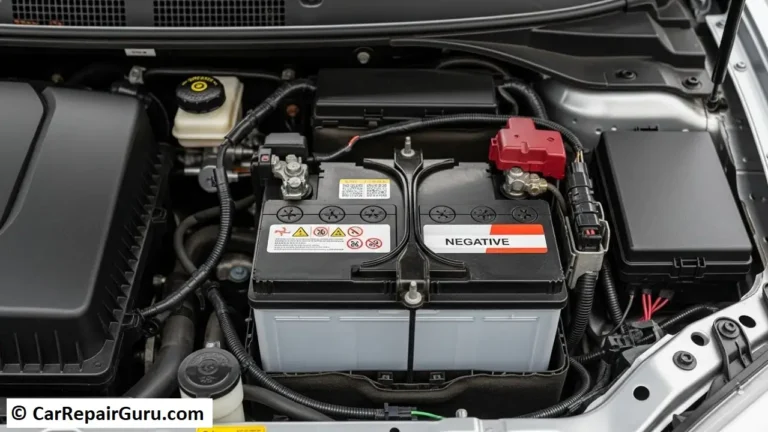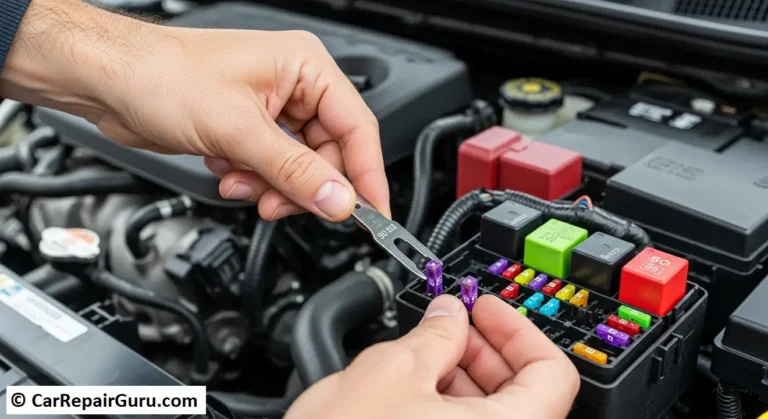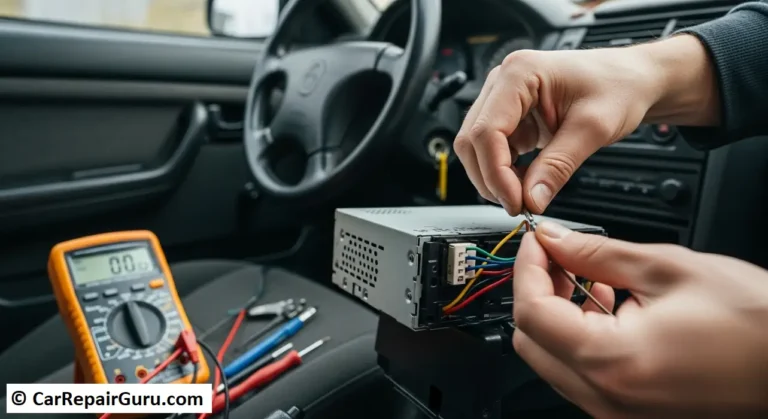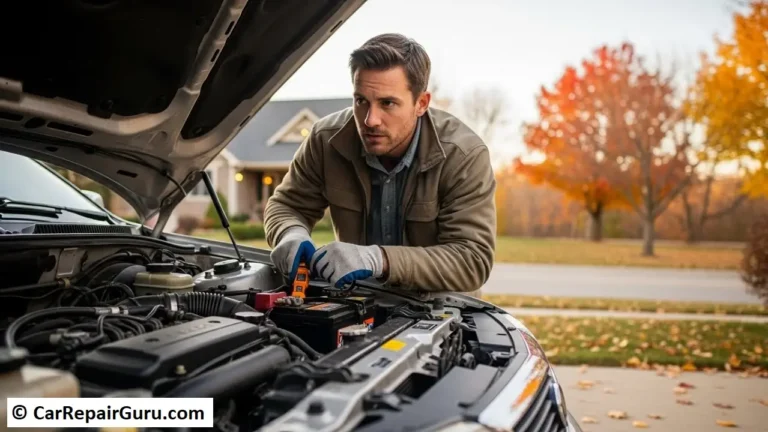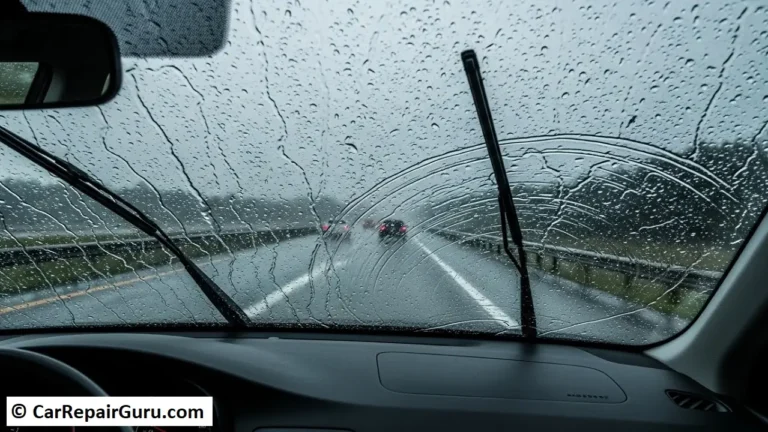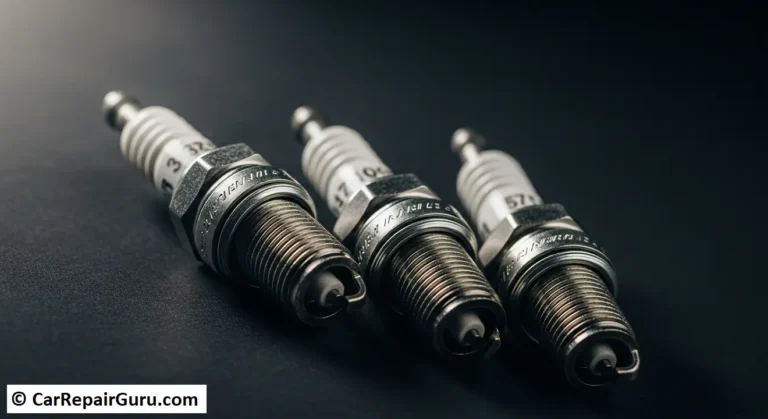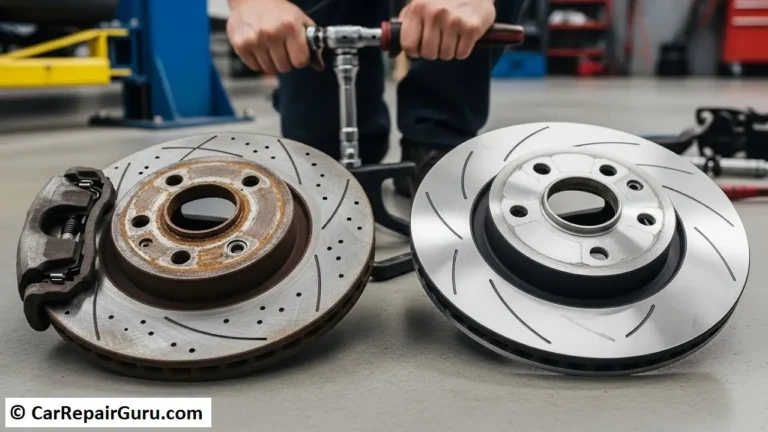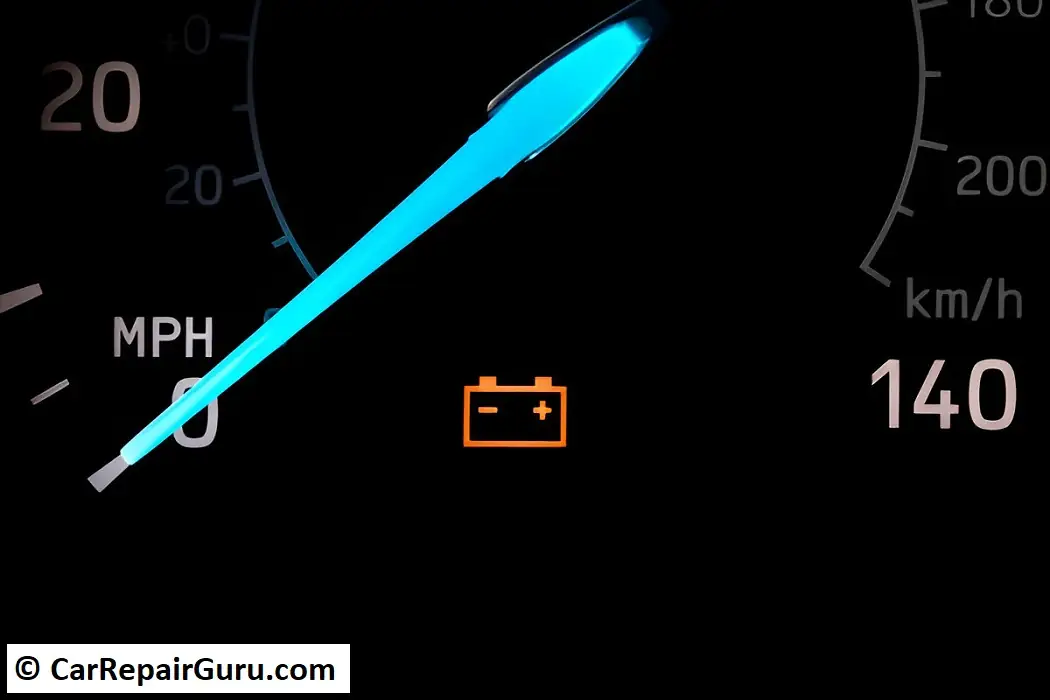
A car battery is the lifeblood of your vehicle’s electrical system. From starting the engine to powering accessories, its role is crucial. Yet, a dead car battery can disrupt your day and leave you stranded. Whether it’s the result of an old battery, extreme weather, or simply leaving the lights on, understanding how to identify, replace, and prevent these issues is essential.
In this guide, we’ll walk you through the common signs, causes, and solutions for a dead car battery. Plus, we’ll share tips to extend your battery’s lifespan and help you avoid unexpected breakdowns.
Signs of a Dead Car Battery
Recognizing the symptoms of a dead car battery early can save you from being stranded. Here are the most common signs:
1. Slow Engine Crank
When you turn the key or press the start button, the engine cranks sluggishly or struggles to start. This is often the first noticeable sign that the battery doesn’t have enough charge.
2. Dim or Flickering Lights
Dim headlights or interior lights that flicker are strong indicators of a failing battery. Since the battery powers all electrical systems, insufficient power can cause these symptoms.
3. Dashboard Warning Light
Most vehicles have a battery warning light on the dashboard. If this light turns on, it could mean the battery is low, the alternator isn’t charging properly, or there’s an issue with the charging system.
4. Accessories Not Working
If your radio, air conditioning, or power windows fail to function, it may signal a drained or dead battery. These systems rely on consistent battery power to operate.
How to Tell If a Car Battery Is Dead
Use a multimeter to check the voltage. A reading below 12.4 volts often indicates the battery is not fully charged. Alternatively, try jump-starting your car. If it starts, the battery is likely the issue.
Symptoms of a Failing Alternator
Sometimes, the problem isn’t the battery. If your battery dies repeatedly after being recharged, the alternator may not be charging it effectively. Look for signs like dimming headlights that brighten as you rev the engine or an odd burning smell.
By spotting these signs early, you can address issues before they escalate, keeping your car running smoothly.
Causes of a Dead Car Battery
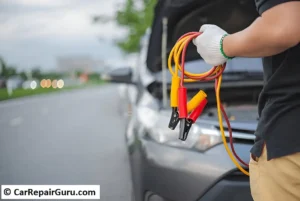
A dead car battery is a common issue, but understanding the causes can help you prevent it. Below are the primary reasons a car battery may fail:
1. Leaving Lights or Accessories On
Forgetting to turn off the headlights, interior lights, or even charging accessories like your phone can drain your car’s battery overnight. Modern vehicles may have alerts to prevent this, but if ignored, the battery may lose its charge entirely.
2. Extreme Weather
Both hot and cold weather can significantly affect a battery’s performance:
- Cold Weather: In freezing conditions, the chemical reactions inside the battery slow down, reducing its ability to hold a charge. If your car struggles to start in winter, it’s often because the battery cannot produce enough power. (Cold weather battery tips: Use a battery blanket or park in a garage to keep the battery warm.)
- Hot Weather: High temperatures can cause the battery fluid to evaporate, leading to corrosion and damage to internal components.
3. Battery Age
Car batteries typically last 3-5 years. As they age, their capacity diminishes, making them more prone to failure. If your battery is nearing the end of its lifespan, it may not hold a charge as effectively, especially under stress.
4. Alternator or Charging System Issues
The alternator recharges the battery as you drive. If it’s not functioning correctly, the battery won’t receive sufficient power, leading to frequent dead battery scenarios. Signs of alternator problems include dimming headlights or a warning light on the dashboard.
Prevention Tips
To avoid these issues, regularly inspect and test your battery. Clean any corrosion on the terminals and avoid leaving electronics plugged in when the car is off. Being mindful of weather conditions and maintaining your battery can save you from unexpected breakdowns.
How to Diagnose a Dead Battery
Not sure if your car’s battery is dead or if another issue is at play? Here are three reliable methods to diagnose a dead car battery:
1. Use a Multimeter
A multimeter is one of the most accurate tools for testing a battery. Follow these steps:
- Set the multimeter to measure DC voltage.
- Connect the red lead to the positive terminal and the black lead to the negative terminal.
- A fully charged battery should read around 12.6 volts or higher. If the reading is below 12.4 volts, the battery is likely not holding a full charge.
2. Try Jump-Starting
If you suspect the battery is dead, jump-starting the car is a quick way to confirm. Use jumper cables and a donor vehicle with a healthy battery:
- Connect the cables correctly (positive to positive, negative to a grounded metal surface).
- Start the donor vehicle, then attempt to start your car.
- If the engine starts, the battery is likely the issue. If not, the problem may lie with the alternator or another system.
3. Seek Professional Help
When in doubt, visit a professional mechanic or an auto parts store for a battery test. They can determine if the battery is dead or if another component, such as the alternator, is causing the issue.
How to Tell If a Car Battery Is Dead
A dead car battery often reveals itself through symptoms like slow cranking, dim lights, and dashboard warnings. Using these diagnostic methods can confirm the problem, saving you time and ensuring the correct solution.
How to Replace a Dead Car Battery
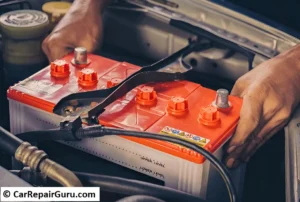
Replacing a dead car battery is a straightforward process if you have the right tools and follow safety precautions. Here’s a complete guide on how to replace a car battery safely and efficiently.
Tools and Precautions
Tools Needed:
- Wrenches (usually 10mm)
- Battery terminal cleaner or wire brush
- Gloves and safety goggles
- A new car battery compatible with your vehicle
Precautions:
- Always turn off the vehicle and remove the keys before starting.
- Wear gloves and goggles to protect against acid spills or corrosion.
- Avoid touching both terminals with the same tool to prevent electrical shorts.
Step-by-Step Replacement Guide
Step 1: Locate the Battery
Open the hood and find the battery. In some vehicles, it may be under a seat or in the trunk.
Step 2: Disconnect the Terminals
- Start with the negative (-) terminal to prevent electrical shorts. Loosen the clamp using a wrench and remove the cable.
- Repeat the process for the positive (+) terminal.
Step 3: Remove the Old Battery
- Loosen any brackets or clamps securing the battery in place.
- Carefully lift the battery out, keeping it upright to prevent spilling battery acid.
Step 4: Clean the Terminals
Use a terminal cleaner or wire brush to remove corrosion and ensure a good connection for the new battery.
Step 5: Install the New Battery
- Place the new battery into the tray and secure it with the brackets or clamps.
- Connect the positive (+) terminal first, tightening the clamp securely.
- Next, connect the negative (-) terminal.
Step 6: Test the Installation
Start the car to ensure the battery is working properly.
Final Tips
Dispose of the old battery responsibly, as it contains harmful chemicals. Many auto parts stores will recycle it for free or provide a discount on your new purchase.
Following this guide ensures your car is ready to hit the road without delay.
Preventing Battery Issues
Preventative maintenance is key to extending the lifespan of your car battery and avoiding unexpected failures. By following a few simple steps and adapting to different climates, you can keep your battery in excellent condition.
Routine Maintenance
1. Clean the Terminals
Corrosion on the battery terminals can prevent a strong connection and reduce efficiency. Regularly inspect the terminals and clean any buildup with a battery terminal cleaner or baking soda mixed with water.
2. Test the Voltage
Use a multimeter to check the battery’s voltage periodically. A healthy battery should read between 12.4 and 12.7 volts when the car is off. If it consistently reads lower, it may need to be replaced or recharged.
Tips for Hot and Cold Climates
Hot Climates:
- Protect from heat: Excessive heat can evaporate battery fluid and damage internal components. Park in shaded areas or garages whenever possible.
- Inspect fluid levels: If your battery allows access, check and maintain the electrolyte levels.
Cold Climates:
- Keep the battery warm: Use an insulated battery blanket to prevent freezing.
- Charge before winter: Ensure the battery is fully charged, as low voltage can make it harder to start the car in freezing temperatures.
Driving Habits and Regular Checks
1. Avoid Short Trips
Frequent short trips prevent the alternator from fully recharging the battery. Combine errands to allow the car to run longer and recharge properly.
2. Perform Regular Battery Checks
Have your battery tested during routine maintenance visits, especially before extreme weather seasons. Many auto shops offer free battery testing services.
Car Battery Maintenance Tips
- Remove unused accessories from the car to reduce power draw.
- Turn off lights and electronics when the engine is off.
- Replace batteries every 3-5 years, depending on the manufacturer’s recommendation.
By incorporating these practices into your car care routine, you’ll minimize the risk of battery-related issues and enjoy more reliable performance.
Car Battery Lifespan: How Long Do They Last?
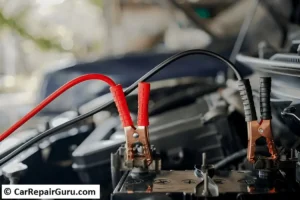
A car battery’s typical lifespan ranges from 3 to 5 years, depending on various factors. While some may last longer with proper maintenance, others can fail prematurely due to environmental conditions or usage patterns.
Factors Affecting Longevity
- Driving Habits: Short trips prevent the alternator from fully charging the battery, reducing its lifespan.
- Climate:
- Hot Weather: Excessive heat can cause the battery’s fluid to evaporate, leading to internal damage.
- Cold Weather: Freezing temperatures slow down chemical reactions, making it harder for the battery to hold a charge.
- Maintenance: Poor maintenance, such as not cleaning corroded terminals or failing to test the voltage regularly, can shorten a battery’s life.
When to Replace Your Battery
If your battery is more than three years old and shows signs of failing (slow cranking, dim lights, or frequent jump-starts), it’s time to consider the best car battery replacement. Regular testing at service intervals ensures you catch a weakening battery before it fails completely.
Investing in a high-quality replacement and maintaining it properly will ensure reliable performance for years to come.
Conventional vs. AGM Batteries
When replacing your car battery, you’ll often choose between conventional flooded batteries and AGM (Absorbent Glass Mat) batteries. Understanding their differences can help you decide which suits your needs.
Conventional Flooded Batteries
These are the standard lead-acid batteries commonly found in vehicles.
Pros:
- Affordable: Typically cheaper than AGM batteries, making them a cost-effective option for most drivers.
- Widely Available: Compatible with most vehicles and easier to find.
Cons:
- Maintenance Required: Some models need regular topping up with distilled water.
- Less Durable: More prone to common car battery problems like leakage, vibration damage, and quicker discharge in extreme temperatures.
AGM Batteries
AGM batteries use advanced technology to hold the electrolyte in fiberglass mats, offering enhanced performance.
Pros:
- Longer Lifespan: AGM batteries last longer and handle deep discharges better than conventional batteries.
- Maintenance-Free: They are sealed, eliminating the need for water refills.
- Superior Performance: Ideal for vehicles with high electrical demands (e.g., luxury cars, start-stop systems).
Cons:
- Higher Cost: AGM batteries are more expensive upfront.
- Overcharging Sensitivity: They are more vulnerable to damage if the charging system isn’t calibrated correctly.
Which Should You Choose?
Conventional batteries are sufficient for standard vehicles and budget-conscious buyers, while AGM batteries are better for modern cars with advanced electronics or harsh climate conditions. Evaluate your car’s needs and driving habits to determine the best fit for your situation.
Conclusion
Proper care and maintenance of your car battery are essential to ensure reliable performance and prevent inconvenient breakdowns. Routine checks, cleaning the terminals, and testing the battery voltage can significantly extend its lifespan. Adapting to seasonal challenges, like protecting the battery in extreme heat or cold, and addressing common issues like corrosion or short trips, will keep your vehicle running smoothly.
Don’t let a dead battery disrupt your plans. Regular maintenance can prevent a dead car battery from ruining your day. Check your battery today! Whether it’s inspecting your current battery or replacing it with the right type, taking these proactive steps ensures your car is always ready to go.
FAQ: About Dead Car Batteries
How can I tell if my battery is dead or if it’s the alternator?
If your car is slow to start, has dim lights, or makes a clicking sound, the battery may be dead. However, if the headlights dim while driving or the engine stalls, it could be a failing alternator. To check, test the battery voltage – if it’s low and doesn’t improve when the engine is running, the alternator may be the issue.
Can a completely dead battery be recharged?
Yes, a completely dead battery can often be recharged with a battery charger or by jump-starting. However, if it doesn’t hold the charge afterward, it may need replacement.
How much does it cost to replace a car battery?
The cost of replacing a battery varies: conventional batteries typically range from $50 to $120, while AGM batteries can cost $150 to $300, depending on the car model and battery type.
What causes a car battery to die suddenly?
A sudden battery failure can be caused by a failing alternator, parasitic drain from electronics left on, or extreme weather conditions that impact the battery’s performance.
